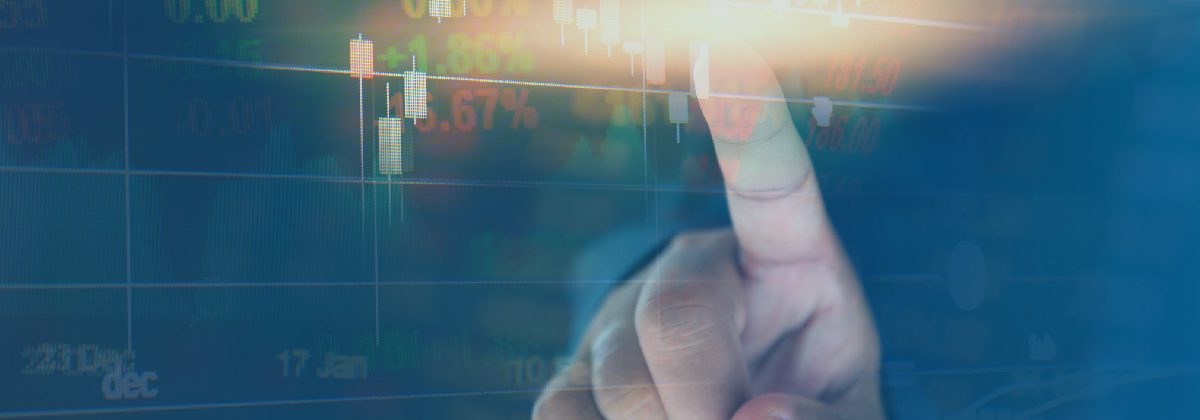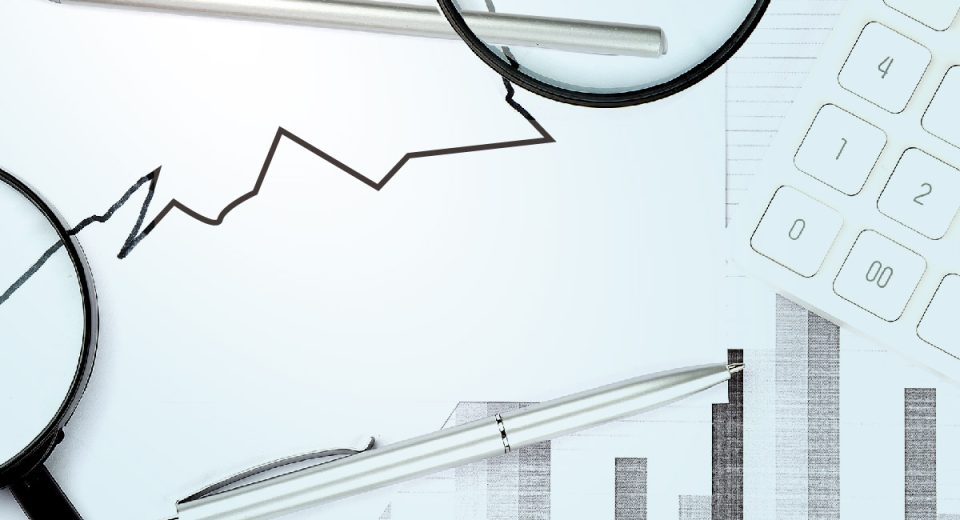Getting Started with Algo Trading: A Step-by-Step Guide

Manually analysing markets takes time and can be prone to errors. This means you might not be able to take as much advantage of as many opportunities as you would like. Time lost in opening trades manually could lead to missed opportunities. Enter algo trading. You can place orders faster and more accurately without having to stay tied to a monitor.
Understanding Algo Trading
Algorithms or computer programmes automate all that you do manually, such as observing the markets, conducting technical analysis and placing orders. They use mathematical models to make decisions. This takes emotions out of the equation. Algo trading strategies can follow trends and trade reversals and also take advantage of arbitrage opportunities and index-fund rebalancing. In short, algo trading is the automated implementation of your trading strategy.
Steps to Begin Algo Trading
Follow this step-by-step guide to begin algo trading:
Step 1: Learn All About Your Chosen Assets and Factors That Move Them
Begin by choosing the assets to trade. Learn all about markets from trusted sources. Even if you have been trading for a while, it is good to refresh your memory from time to time, especially when trying out something new. Blackwell Global has a rich library of educational tools, such as eBooks, webinars and more. It covers everything from beginner to expert trading strategies. Gaining market knowledge can help you develop your own strategy to automate or choose from readymade ones.
Step 2: Develop an Algo Trading Plan
There are two ways to start algo trading: convert your strategy into a computer programme or use an existing one and tailor it to your needs.
You may need to learn coding to automate your strategy, which takes time and effort. The good news is that the best brokerage platforms offer Expert Advisors (EAs). These are ready-to-use trading plans that you can integrate with your MetaTrader account and customise to have a trading algo ready. An added bonus is that you don’t need a different platform for automated trading.
Consider the following while choosing a trading algo:
Rating of the algo: Most brokers provide some form of rating for you to gauge efficacy.
Customisability: Check the available customisations while choosing an EA. Most EAs have a list of parameters you can customise without needing to code. These allow you to align the trading algo to your strategy.
Risk management: Put additional effort to look for risk management tools and custom stop loss and take profit limits.
Compatibility: Your chosen must align with your trading style. For instance, if you prefer to place 5 trades per day, an algo with the potential to open 50 trades could be overwhelming to work with.
Real-time market access: The trading algo must work with rapidly incoming real-time market data to prevent losing opportunities. This is particularly important for high-frequency traders, who place several orders per minute.
Check out this step-by-step guide to creating and integrating EAs into your MT4/MT5 account.
Step 3: Customise the Algorithm
Since you are leaving trading decisions to a computer programme, make sure you set all parameters according to your financial goals. Trading algorithms do not think, they just do, based on the programmed set of instructions. Your chosen parameters will trigger open and close orders for your positions. If using leverage, stay cautious and employ risk management measures, such as stop loss and take profit, with every order. Of course, you can automate setting risk limits through the algo. You can customise many things including signals, entry/exit rules, order types, stop-loss levels, position sizing and more, depending on the EA.
Step 4: Backtest Rigorously
Backtesting means running your strategy on historical data to gauge how it would have performed. This gives you insights regarding its effectiveness in the live markets and the need to adjust parameters. Experienced traders also use demo accounts to test their chosen EAs. You can also simulate the market conditions you expect to arise to further stress-test your strategy.
Once you are satisfied with the trading algo and have adjusted it to your trading goals, you are ready to go live. Let your algo do the work while you free yourself of constantly having to monitor the markets to make the most of emerging opportunities.
Step 5: Monitor and Refine
While algo trading eliminates the need to stay glued to the monitor, it cannot respond to changing market conditions on its own. Major geopolitical events, economic data releases, corporate earnings, etc., can cause volatility in the markets. Therefore, monitoring the markets and adapting your trading algorithm accordingly is important.
Step 6: Maintain a Trading Journal
Keeping detailed records of your algo trading performance can offer insights into further improving your strategy. Some essential things to track include entry and exit points, position sizes, profits/losses, alignment of the position with your trading goal, etc. Feel free to add to the list as you see fit. This information helps you understand your short- and long-term performance. They also help you improve the trading algo.
Things to Keep in Mind While Algo Trading
- Ensure you choose a regulated broker that fulfils proper licensing and reporting requirements.
- Do not try to over-optimise your trading algorithm to a specific market condition. This may be counterproductive in the long run since your trading strategy may lose its flexibility to adapt to changing market conditions.
- Beware of black swan events, since trading algorithms may not be able to automatically navigate them. These are unprecedented events, such as the global shutdown due to the pandemic. They severely impact the broader markets.
- A power outage while placing an order can cause delays or, worse, place an order after the markets have already moved. Use a virtual private server for algo trading to eliminate the risk of power outages affecting trading outcomes. A VPS hosts trading algorithms on cloud-based servers, which maximises uptime and minimises latency.
Algo Trading Strategies
Algo trading can be applied to automate any form of trading. Some of the popular applications of algorithmic trading are:
Trend Trading
This involves identifying and taking advantage of ongoing trends. Traders automate buying during uptrends and selling during downtrends.
Arbitrage Trading
This is a popular strategy that exploits price discrepancies between different markets. It works for dual-listed stocks and forex. It may use statistical models to identify and explore opportunities due to temporary price anomalies.
High-Frequency Trading (HFT)
HFT, an automated form of scalping, is the most popular use of algo trading. The strategy involves executing a large number of orders within seconds, attempting to profit from tiny price movements.
Index Fund Rebalancing
This trading strategy takes advantage of the fact that index funds are balanced after defined periods. It captures the opportunities arising from the index composition before and after rebalancing.
To Sum Up
- Algo trading means automating trade execution to minimise delays.
- You can use readymade algorithms or create your own.
- Algo trading can be used for trend, arbitrage and high-frequency trading strategies.
- Including risk management within your trading algo is paramount.
- It requires careful planning and adjusting the algo parameters to market conditions.
- Monitoring algo trading is crucial to prevent unexpected market events from adversely impacting your portfolio.
Disclaimer:
All data, information and materials are published and provided “as is” solely for informational purposes only, and is not intended nor should be considered, in any way, as investment advice, recommendations, and/or suggestions for performing any actions with financial instruments. The information and opinions presented do not take into account any particular individual’s investment objectives, financial situation or needs, and hence does not constitute as an advice or a recommendation with respect to any investment product. All investors should seek advice from certified financial advisors based on their unique situation before making any investment decisions in accordance to their personal risk appetite. Blackwell Global endeavours to ensure that the information provided is complete and correct, but make no representation as to the actuality, accuracy or completeness of the information. Information, data and opinions may change without notice and Blackwell Global is not obliged to update on the changes. The opinions and views expressed are solely those of the authors and analysts and do not necessarily represent that of Blackwell Global or its management, shareholders, and affiliates. Any projections or views of the market provided may not prove to be accurate. Past performance is not necessarily an indicative of future performance. Blackwell Global assumes no liability for any loss arising directly or indirectly from use of or reliance on such information here in contained. Reproduction of this information, in whole or in part, is not permitted.




